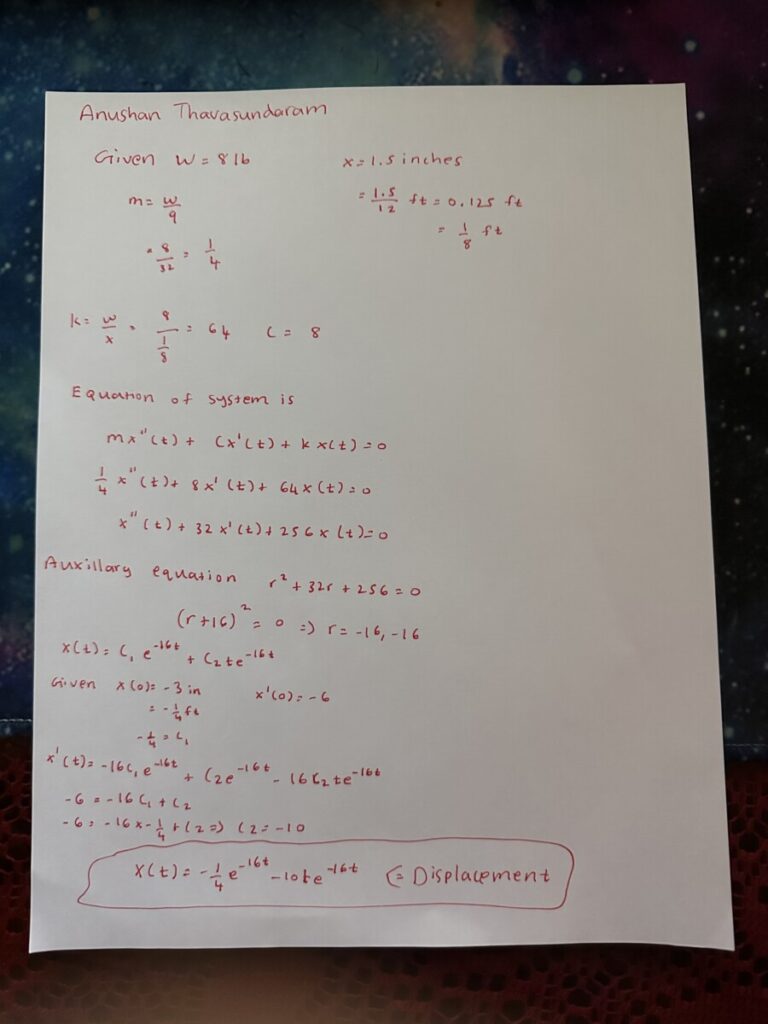Author: Jose Rodrig (Page 1 of 3)
here is my draft essay on The Application of Black-Scholes Equation.
Good day/evening classmates, in this post you will learn about one of the applications of Second-Order Differential Equations. Specifically, one of the topics found in Chapter 2, Section 6.2 of the Textbook ‘Elementary Differential Equations’ by author William F. Trench.
It talks about Undamped Spring problems which involves the study of the motion of an object attached to a spring, that is assumed to have no friction or damping.
Lesson Summary
Undamped spring problems can be used to model a variety of physical systems, including the motion of a pendulum, the oscillations of a guitar string, or the vibrations of a building during an earthquake. They are also used in engineering and physics to design and optimize mechanical systems.
The equation that aids us to determine the motion of an object attached to a spring is called the spring-mass system equation, and it is a second-order linear homogeneous differential equation. This equation is derived from Newton’s second law of motion and Hooke’s law, which states that the force exerted by a spring is proportional to its displacement from its equilibrium position.
The general solution to the spring-mass system equation is a linear combination of a sine and a cosine function. The specific solution depends on the initial conditions of the system, such as the initial displacement and velocity of the object.
Example Problems
Here are some examples worked on by other colleagues, and videos to use as guides towards getting to know the solutions and how to work these kinds of problems.
Example #1
In this video the solution to problem #14 from the textbook is shown.
Solved and made by: Jose Rodriguez.
Example #2
In this Image the solution to problem #3 from the textbook is shown.





Recent Comments